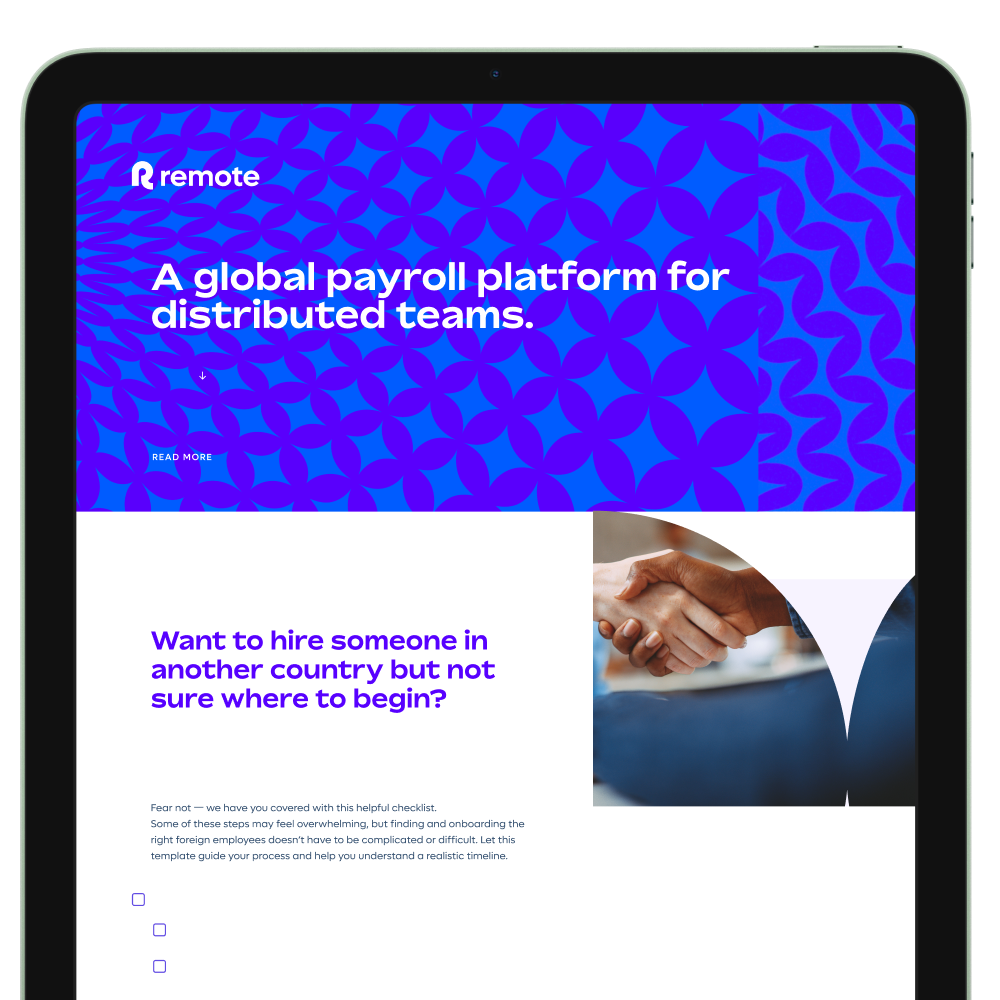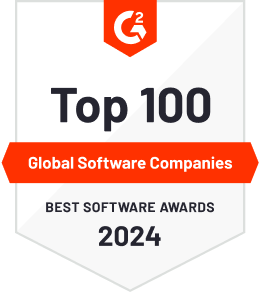
Product Updates — 7 min

Global Payroll — 10 min
With remote work options increasing worldwide, companies are no longer limited to the talent in their own backyard.
More and more businesses are realizing the benefits of building global teams.
It is much easier to pay your local employees, though, than your workers located across the globe.
The Society for Worldwide Interbank Financial Telecommunication (SWIFT) is one of the many tools available that can help you successfully manage international payroll.
This article will provide you with the basics of what SWIFT is, how it works, and how you can use it to help manage your global team.
SWIFT is a member-owned group that provides secure financial communications for its members. It is based in Belgium, with over 20 other offices around the globe.
SWIFT uses its global messaging platform to facilitate global financial transactions, including payments to international employees and contractors.
More than 11,000 banks in over 200 countries use the SWIFT network to complete financial transactions. SWIFT communications facilitate more wire transfers than any other network.
SWIFT also lives up to its name. In 2022, two-thirds of all transactions landed within one hour, and almost half reached their final destination within five minutes.
SWIFT is a messaging platform through which banks send information about transactions. It is not a bank or financial institution. The banks themselves carry out the transactions.
When you use an international wire transfer to pay an employee, your bank uses SWIFT codes to send data about the transfer to the receiving bank.
If your bank doesn’t have an existing relationship that enables them to transfer funds to that bank directly, then one or more intermediate financial institutions may be involved.
For example, your bank, Bank A, wants to send transaction information to Bank D. Bank A first talks to Bank B. Bank B then talks to Bank C, which communicates the information to Bank D, your final destination.
Think of it like stepping on a series of stones to cross a river. You might not be able to jump from one side of the river to another, but you can make several small jumps to complete the distance.
SWIFT connects the stones one jump at a time. This is how the transactions, like those from employers to employees, are processed.
A SWIFT code is a unique code used to identify an individual institution involved in a transaction through the SWIFT network.
Each code is composed of either eight or 11 characters:
The first four characters refer to the financial institution.
Characters five and six refer to the country of origin.
Characters seven and eight refer to the city in which the bank is located.
When used, characters 9 to 11 refer to a specific branch of that bank.
SWIFT codes may also be called a Bank Identifier Code (BIC), a SWIFT ID, or an ISO 9362.
Unless you are a financial institution initiating or receiving SWIFT communications, you do not need a SWIFT code.
However, if you are paying your workers via international wire transfers, you will need to know the SWIFT codes of the banks involved.
SWIFT codes are unique from other code types used in the financial sector. Any institution using SWIFT is assigned a code to send messages or transfer and receive funds securely.
Routing numbers and SWIFT codes both identify specific institutions and are used in financial transactions. However, they are not the same.
A SWIFT code is an 8 or 11-character code composed of letters and numbers that refers to an institution within the SWIFT network.
A routing number is a 9-digit numeric code that identifies a specific U.S. bank or financial institution during electronic transmissions.
While every bank has a routing number, only those in the SWIFT network will have a corresponding SWIFT code.
SWIFT is used by banks, financial institutions, foreign exchanges, asset-management companies, and even some non-financial institutions.
If you are paying workers or contractors abroad through international wire transfers, then SWIFT would be useful.
SWIFT’s secure and easy messaging platform has become integral to global banking, and being a part of SWIFT is now a must for countries that want to take part in the international financial system. In fact, banks have even been removed from the SWIFT system as a form of sanctions.
SWIFT provides members with a dashboard to view and manage their transactions.
If your bank plans to pay your employees using SWIFT, you need to gather the appropriate identifying information.
You will also need to process, track, and manage your global payroll.
If you outsource payroll, your payroll provider may be able to handle SWIFT payments for you. That way, you can focus on delivering value to your clients rather than micromanaging payroll.
You will need the following basic information for a SWIFT transaction:
The name and address of the recipient
The name and address of the receiving bank
The receiving bank’s SWIFT code
The recipient’s account number or IBAN (International Bank Account Number)
Incorrect SWIFT codes or other information can delay processing, which means workers won’t be paid on time.
This can have consequences if the delay violates the employment contract or local statutes.
SWIFT is member-owned.
Members pay a one-time initial fee and then annual fees thereafter. However, your bank or financial institution may charge additional fees for individual wire transfers.
Now that you understand how SWIFT is used to process global payments, let’s take a look at where it fits into a larger suite of global payroll tools.
If your company isn’t registered as a legal entity, you can’t directly use SWIFT to pay your global employees and contractors.
If you use an employer of record (EOR) partner, however, they can collect the necessary data and initiate transactions on your behalf.

There are many ways to pay remote workers based in other countries.
Some popular methods include checks, ACH transactions, and wire transfers via the Single Euro Payments Area (SEPA) in Europe or SWIFT worldwide.
The right choice for your situation depends on several factors, including the currency and the location of participating parties.
If your workforce is fully distributed, you may have several different ways of compensating employees.
Remote’s Guide to Managing Global Payroll has more information on paying international employees.
Without a local legal entity, you cannot employ workers in a different country.
The costs of setting up a local legal entity can be significant, and completing the process may take weeks, months, or even longer. Depending on how many workers you want to hire, these costs may not make sense for you.
You still have options.
An EOR allows companies to employ workers in other countries without having to create and register separate legal entities in each country. However, not all EORs operate the same way.
Your EOR partner should be able to help you stay compliant with labor laws and statutes, as well as provide you with advice on the classification status of your employees.
Beyond payments, EORs can provide a wide variety of services for international teams. A robust EOR partner can help you:
Track and manage wages, benefits, leave, and paid time off
Maintain compliance with tax, employment, and labor laws in each country
Offer a competitive benefits package specific to where your team lives
Streamline onboarding and management to ensure a positive employee experience
Work within multiple countries easily and efficiently
An employer of record may use SWIFT payments to manage payroll for your team members, or they may use other options depending on their infrastructure and processes.
The nice part is that you don't have to worry. The best EORs take the complexity and risk of payroll out of your hands, so you can be confident that your entire global team gets paid accurately, quickly, and in compliance with all relevant local labor laws.
Work through this checklist to help you stay compliant when you're employing across borders.

SWIFT’s messaging platform, SWIFTNet, does more than just transfer funds and complete financial transactions.
It offers four different services to its members:
FIN. A type of message in SWIFT format that allows financial institutions to send messages to one another.
InterAct. This service is similar to FIN in terms of transmitting single messages and exchanging market formats. However, it offers users greater flexibility, as they can send a previously created message or a new one in real time.
FileAct. Users turn to the FileAct service when sending particularly large files or reports. This could include bulk payment files, central bank reporting, or operational data transfers.
WebAccess. WebAccess services provide users with increased security and peace of mind while browsing financial sites.
Accessing the SWIFT and SWIFTNet platforms provides streamlined, secure services.
The global nature of business in 2023 and beyond will bring about more opportunities than ever for companies and workers.
However, these opportunities include the added complexities of managing a global workforce and payroll.
Paying your workers involves more than just paychecks. With the right partner, you can provide a first-class experience for your global team.
The secure, efficient, and trusted nature of SWIFT communications and transactions is also an essential part of international payroll.
Remote Employer of Record services simplify this process for any company trying to manage payroll for international team members.
Remote's EOR product makes SWIFT transactions seamless. When the local currency of an employee is not either the Euro or the US dollar, Remote uses SWIFT or local bank transfers to make sure your team members are paid accurately and quickly. You won’t have to worry about the codes, regulations, and timelines because Remote handles everything on your behalf, maintaining compliance at every step of the process.
Your employees also won’t have to worry – Remote provides a superior employee experience with expert customer support. Remote’s comprehensive HR platform gives you and your team easy access to all of their employment data at any time.
Remote uses local bank transfers when possible to transfer salary to employees. If local bank transfers are not available to us in the employee’s country and local currency, the employee will receive payments via SWIFT.
If the local currency is Euro (EUR) and the employee’s bank account has access to SEPA, Remote will make salary payments via SEPA (Single Europe Payments Area)
If the local currency is any other than Euro, the employee will receive salary payments via local bank transfer or through SWIFT
If the local currency is US Dollar (USD), employees will receive salary payments via US domestic bank transfer or ACH (automated clearing house)
An Employer of Record like Remote is the ideal partner to help you simplify the process of paying international employees in countries where you don’t own a local legal entity. If the following three instances are true for your company, you should consider using an EOR to speed up and simplify your global HR and payroll management:
You want to hire an employee in a country where you don’t currently have a legal entity.
You need to expand into new countries quickly and don’t have months of time and the huge financial resources required to build out entities.
You don’t have internal expertise in global employment or local partners to ensure compliance.
Many Employer of Record service providers rely on third parties in the countries where they operate. Check whether your vendor uses any third-party intermediaries, which can cause delays, inconsistencies, and compliance risks.
Remote uses an owned-entity model, so we maintain control over your employment data in every country of operation. We do not rely on third parties, which means customers can expect the best level of transparency, security, and accuracy at all times.
Start using Remote’s employer of record services and local entities to avoid the time, cost, and risk of building your own.

Subscribe to receive the latest
Remote blog posts and updates in your inbox.

Product Updates — 7 min

Global Payroll — 2 min

Minimum Wage & Compensation — 7 min

Newsroom — 5 min